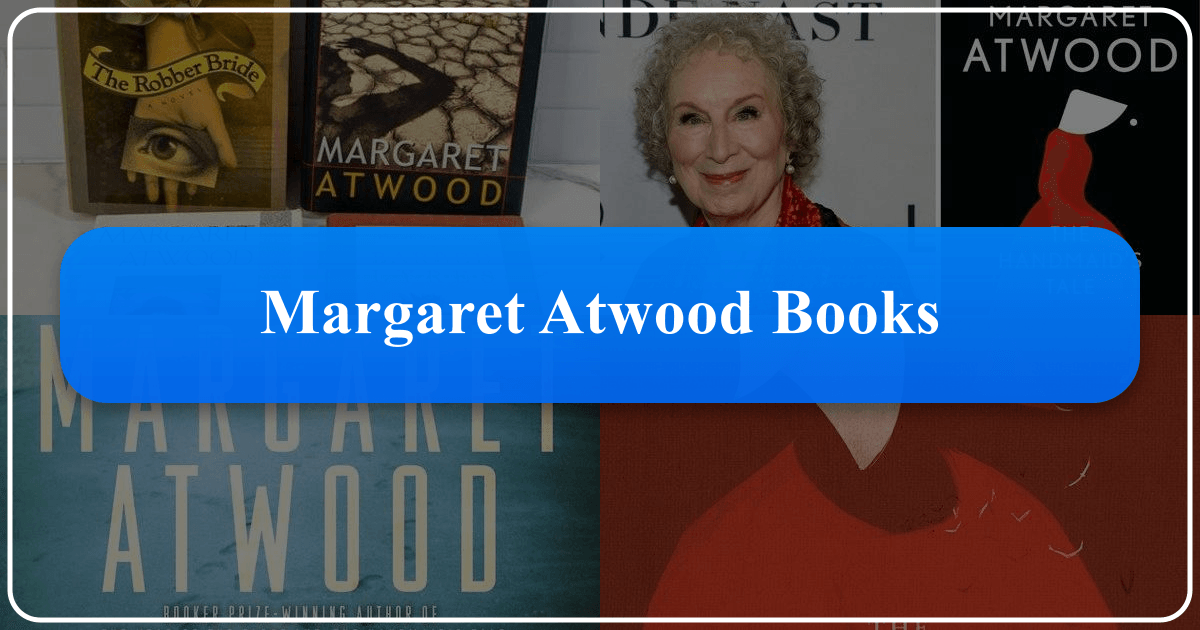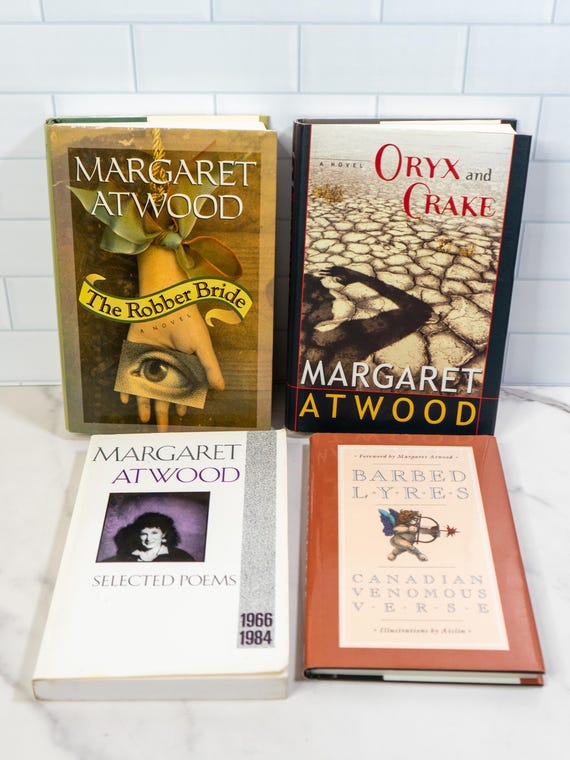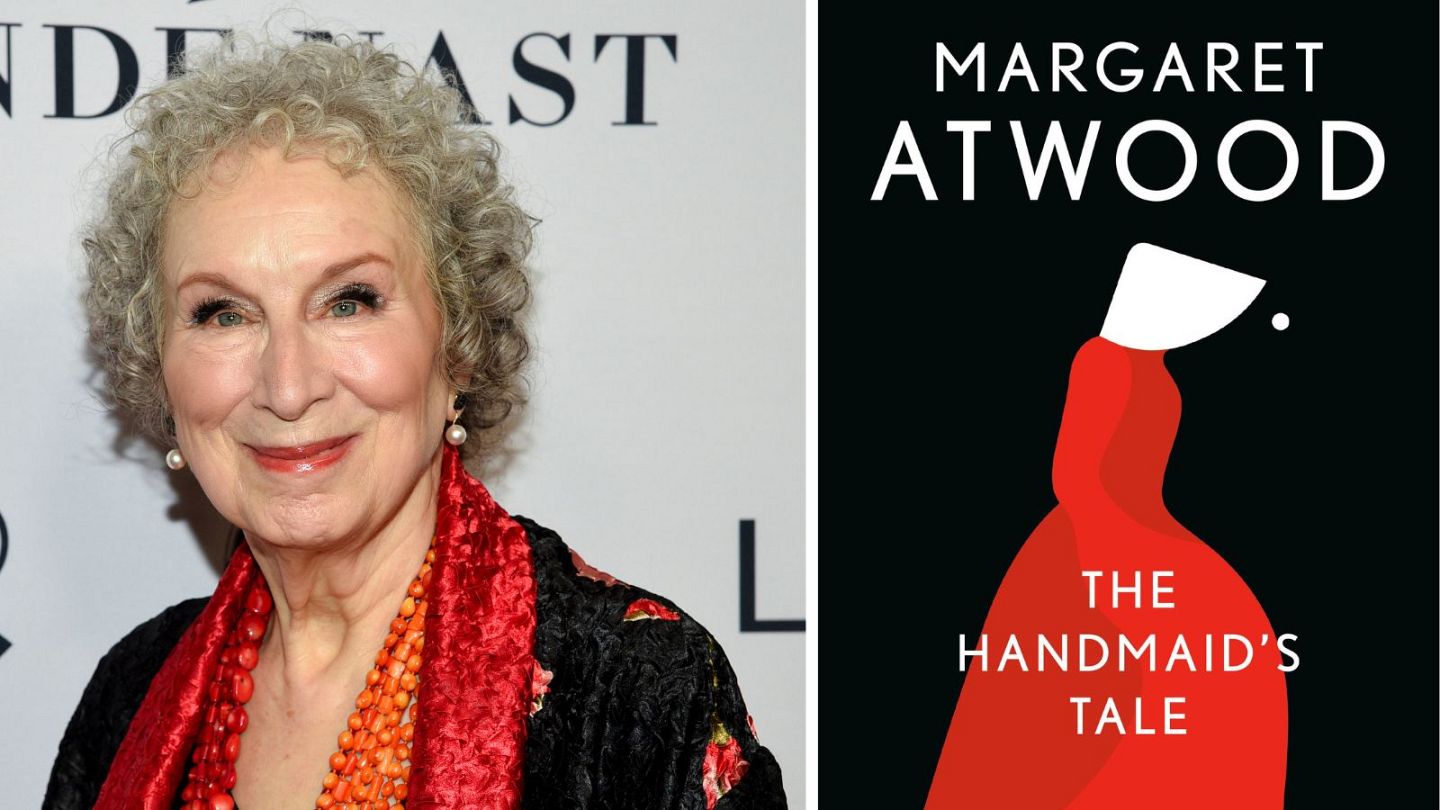Margaret Atwood Books: A Comprehensive Exploration

Canadian author Margaret Atwood is a literary icon, renowned for her profound prose, insightful political commentary, and the seamless integration of both within her diverse body of work. Atwood’s writing fearlessly tackles complex themes revolving around power dynamics and gender politics, spanning genres including non-fiction, science fiction, poetry, historical fiction, and feminist literature. Yet, despite the weightiness of these subjects, her writing remains accessible, deeply engaging, and profoundly educational. Her decades-long career as an award-winning author has cemented her status as one of the most influential and creative voices of our time. This exploration delves into the breadth and depth of her literary contributions, highlighting key works and themes to illuminate why her books resonate so deeply with readers worldwide.
Atwood’s Diverse Literary Landscape: Genres and Themes

Margaret Atwood’s prolific output defies easy categorization. While her works often explore the complexities of gender and power, they are remarkably versatile in their genre and style. Her novels range from the satirical exploration of societal norms in her debut work to the dystopian visions of Gilead in The Handmaid’s Tale and its sequel. Her short stories delve into the psychological intricacies of human relationships, while her non-fiction essays provide insightful commentary on literature, politics, and the environment. This thematic and stylistic breadth showcases her remarkable versatility as a writer.
Exploring the Speculative and Dystopian: Science Fiction and Feminist Literature
Atwood’s engagement with science fiction is not merely an exploration of futuristic technologies; it’s a potent tool for social commentary. Her dystopian novels, such as The Handmaid’s Tale and the MaddAddam trilogy, extrapolate current societal trends to create chillingly believable futures. These narratives serve as cautionary tales, warning against the dangers of unchecked power, religious extremism, environmental degradation, and the suppression of women’s rights. The impact of The Handmaid’s Tale, in particular, transcends the realm of literature; its imagery and themes have become ingrained in contemporary socio-political discourse, frequently used to symbolize resistance against oppression. The success of the Hulu adaptation further solidifies the novel’s powerful cultural relevance.

Psychological Depth in Atwood’s Fiction: Exploring the Human Condition
Atwood’s novels are not simply genre exercises; they are profound explorations of the human psyche. Her characters grapple with complex internal conflicts, challenging readers to confront their own biases and assumptions. From the protagonist’s struggle with identity in The Edible Woman to the intricate psychological portrait of Grace Marks in Alias Grace, Atwood masterfully portrays the internal struggles that shape our lives. These psychological narratives are often intertwined with social critique, highlighting the ways societal structures impact individual experiences.

The Power of Narrative and Structure: Atwood’s Mastery of Craft
Atwood’s exceptional skill as a writer is evident in her masterful use of narrative structure and point of view. Her novels frequently employ multiple timelines and perspectives, creating a richly layered narrative that challenges readers to piece together the puzzle. This technique is particularly evident in Alias Grace, where the dual timelines of Grace’s past and present create a compelling sense of mystery and suspense. Similarly, the structure of The Blind Assassin intricately weaves together Iris’s memories and the fictional novel within, mirroring themes of memory, truth, and storytelling. Her command of language further enhances these structural innovations, resulting in prose that is both elegant and powerful.
A Closer Look at Select Works: Margaret Atwood’s Key Novels
The following sections provide more in-depth analyses of several of Atwood’s most acclaimed novels, examining their unique themes and literary techniques.
The Edible Woman (1969): A Satirical Debut
Atwood’s debut novel, The Edible Woman, introduces us to Marian MacAlpin, a young woman navigating the pressures of societal expectations. Marian’s struggle to conform to the role of the ideal wife and her simultaneous rejection of societal norms are explored through surreal imagery and darkly humorous situations. Her growing aversion to food mirrors her growing discomfort with her life, highlighting the suffocating nature of societal expectations on women. The novel serves as a potent satire of consumerism, exposing the superficiality of material pursuits and the alienation they can cause.
Surfacing (1972): A Journey of Self-Discovery
Surfacing follows a young woman’s return to her childhood home in northern Quebec, a journey that becomes a metaphorical exploration of her own past and identity. The isolation of the island mirrors the protagonist’s emotional isolation, forcing her to confront suppressed memories and trauma. The natural landscape of the island plays a crucial role in the narrative, representing both the power of nature and the protagonist’s struggle to connect with her own primal self. The novel deftly blends psychological realism with elements of mystery and suspense, leaving a lasting impression on the reader.
Alias Grace (1996): A Tale of Mystery and Moral Ambiguity
Based on the real-life case of Grace Marks, Alias Grace masterfully utilizes dual timelines to piece together the events surrounding a murder. Atwood’s narrative oscillation between past and present creates a compelling mystery, while the ambiguous portrayal of Grace challenges the reader to question notions of guilt and innocence. The novel explores themes of memory, trauma, and the complexities of female identity within a patriarchal society. Atwood’s nuanced portrayal of Grace and the historical context create a compelling and unforgettable reading experience.
The Robber Bride (1993): A Twisted Tale of Friendship and Betrayal
The Robber Bride follows three college friends who find their lives intertwined with the manipulative Zenia. The novel unfolds through multiple perspectives, each offering a unique interpretation of Zenia’s actions and their impact on the friends. The narrative structure emphasizes the subjectivity of truth and the difficulties of understanding others. Atwood’s masterful use of irony and dark humor creates a compelling and engaging narrative, despite the complex, multi-layered structure.
The Blind Assassin (2000): A Multi-layered Narrative of Family Secrets
The Blind Assassin is a multi-layered novel that cleverly intertwines the story of Iris’s reflections on her family’s past and the fictional pulp novel written by her deceased sister. This complex structure reflects the themes of memory, storytelling, and the complexities of family relationships. The narrative’s blend of gothic suspense, romance, and science fiction elements creates a richly layered tapestry that keeps the reader engaged and thoughtful. The novel won the Booker Prize for its masterful execution and thematic depth.
Oryx and Crake (2003): A Dystopian Vision of Genetic Engineering
The first novel in the MaddAddam trilogy, Oryx and Crake, depicts a post-apocalyptic world where the protagonist, Snowman, struggles to survive. The novel explores the consequences of unchecked scientific advancement, specifically genetic engineering, and its impact on the environment and human society. Atwood’s dark humor and sharp wit are present throughout, adding a layer of irony to the bleak narrative. The novel challenges readers to contemplate the ethical implications of scientific progress and its potential for catastrophic outcomes.
The Year of the Flood (2009): A Post-Apocalyptic Tale of Survival
The second book in the MaddAddam trilogy, The Year of the Flood, delves into the aftermath of a devastating plague that decimates the human population. The narrative focuses on two survivors, Ren and Toby, who are forced to confront the changed world. Atwood continues to explore the themes of environmental destruction, corporate greed, and the resilience of the human spirit. The novel’s vivid imagery and dystopian setting, coupled with Atwood’s signature blend of dark humor and social commentary, make it a compelling and thought-provoking sequel.
MaddAddam (2013): A Conclusion to a Dystopian Trilogy
The final novel in the MaddAddam trilogy, MaddAddam, brings the series to a complex and surprising conclusion. The narrative delves into the ongoing struggles of the surviving characters as they navigate the challenges of a post-apocalyptic society. The novel blends elements of science fiction, satire, and environmental commentary, further cementing Atwood’s position as a master of dystopian fiction.
Stone Mattress (2014): A Collection of Short Stories
Stone Mattress brings together a selection of Atwood’s short stories that continue to explore the themes present in her novels with equal depth. The stories showcase her ability to create compelling characters and narratives within a shorter form, offering insights into the human condition through the exploration of distinct psychological situations. The title story, ‘Stone Mattress’, particularly exemplifies this aspect.
The Heart Goes Last (2015): A Dystopian Novel of Economic Collapse
The Heart Goes Last presents a dystopian society grappling with economic collapse, a narrative Atwood handles with her usual incisive and darkly comedic touch. Atwood’s examination of human nature under pressure is compelling.
Hag-Seed (2016): A Modern Retelling of The Tempest
Hag-Seed, a unique entry in Atwood’s repertoire, is a reimagining of Shakespeare’s The Tempest, demonstrating her deep understanding of classic literature and its relevance to modern contexts.
The Testaments (2019): A Sequel to The Handmaid’s Tale
The Testaments, a highly anticipated sequel to The Handmaid’s Tale, revisits the dystopian world of Gilead from the perspective of three women, building upon the themes of resistance, resilience, and gender politics that made the original novel so powerful.
Atwood’s Cultural Impact and Literary Influence
Margaret Atwood’s contribution to literature extends beyond her individual works. Her writing has significantly impacted literary trends, influencing countless writers and shaping contemporary discussions on crucial social and political issues. Her exploration of feminist themes, her fearless exploration of dystopian futures, and her masterful command of language have all left an indelible mark on the literary landscape. The numerous adaptations of her work into film and television further highlight her significant cultural influence. Her books continue to provoke, inspire, and challenge readers worldwide, solidifying her legacy as a truly significant literary figure.
This exploration only scratches the surface of Margaret Atwood’s impressive literary output. The diversity of her work, her mastery of craft, and her keen social awareness ensure that her books will continue to resonate with readers for generations to come. Lbibinders.org encourages readers to explore her comprehensive bibliography and discover the unique power and insight found within each of her works.